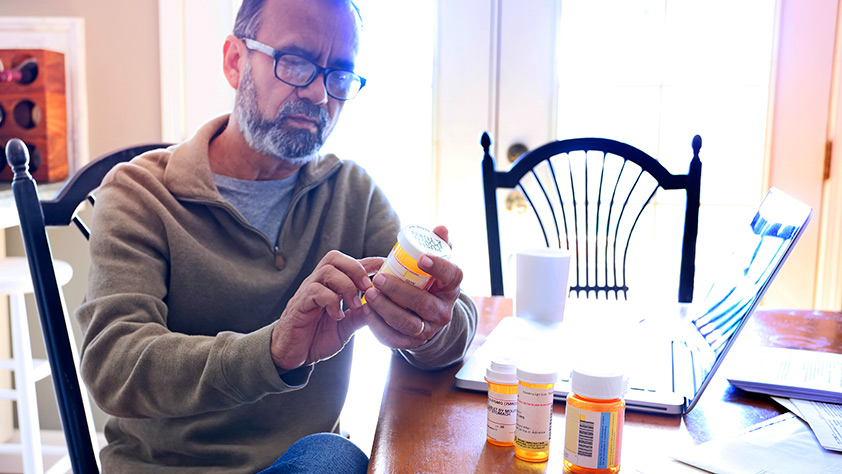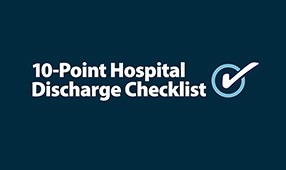Key takeaways
- Drug prices are rising and one in four Americans are paying more today than a year ago.
- There are many ways to reduce drug prices, particularly for those with lower incomes.
- Prices vary so it pays to shop around and ask if there are generic alternatives.
- Drug companies offer Patient Assistance Programs that provide free or low cost meds.
Americans spend more on prescription drugs per person than any other country—by a mile. In 2015, we spent $325 billion on retail prescription drugs.1 About 43% of these costs were paid by the federal government, mostly through Medicare and Medicaid. According to a Consumer Reports survey, 25% of respondents say they are paying more at the pharmacy than they did just 12 months ago. And about 14% chose to not fill prescriptions at all because they couldn’t afford the cost.
The good news is cutting back on pharmaceutical costs is easier than you think. Here are 10 tips that could save you a bundle.
- Go generic. Generics are manufactured using the same standards as brand name drugs and have the same active ingredients, often at a much lower cost (but not always). “It’s the first place to start,” explains Reid Rasmussen, a consumer health expert. "It's possible that the non-generic works better for you, but by all means start with the generic, always." A few generic medications are not equivalent to their brand-name counterparts so always ask your pharmacist if a generic is available and indicated.
- Make your prescription drug insurance work better. Each insurance company and every type of drug plan has a list of drugs they do and don’t cover. It’s called a formulary and it can be daunting to pore over. A better alternative is to simply call your insurance company and ask if the drugs you’re being prescribed are covered. If a drug is not on the formulary, ask if there is an alternative that is covered.
- Use a preferred pharmacy. A preferred pharmacy is one that has pre-negotiated lower prices on prescriptions for a particular insurance plan. According to AARP, over a third of employers have negotiated lower costs through preferred pharmacies for employee health benefit plans. Medicare prescription drug plans also list preferred pharmacies that run the gamut from independent stores to big drug chains, grocery stores and other major retailers for maximum convenience. Other pharmacies, called standard pharmacies may be in your insurer’s network but you may have to pay higher co-pays when buying from them.
- Order a 90-day supply. Some medications are available in a 90-day-supply—either through your local pharmacy, or through your insurance company’s pharmacy plan. If you choose the latter, not only will your meds be delivered to your doorstep, but you can also process refill requests online. If it’s a new medication, however, start with a regular 30-day supply to make sure you can tolerate the drug. Then move to a 90-day supply.
- Ask for alternative medications that may cost less. Doctors don’t always know how much the meds they prescribe cost. In many cases, several different medications can effectively treat the same ailment. Ask your pharmacist if there’s a cheaper alternative, then get your doctor’s approval to make the switch.
- Sign up for a drugstore rewards program. The three major drugstore chains—Rite Aid, CVS, and Walgreens—each offer some type of rewards program. It’s free to sign up. You accumulate points when you fill prescriptions, get a flu shot or check your blood pressure at in-store kiosks. The points can be redeemed for discounts on other health and wellness products and services. The frequent-shopper programs aren’t available in all states, so check with your local drug store. Discount programs may also be available at Target, Walmart, Kroger, Kmart and Costco, among others.
- Compare prices. Prices vary from pharmacy to pharmacy. Call around, choose a pharmacy that’s convenient for you and tell them the price you were quoted. Many pharmacies will match it. Apps like GoodRX can help you compare prices and discounts at local pharmacies and print free coupons. But see #3 above before deciding which pharmacy to use. If you take multiple medications, it’s best to purchase all of your prescriptions from the same pharmacy, so your pharmacist can check for drug interactions, duplicate therapy or other medication issues.
- Split pills. Ask your doctor if your prescription comes in a higher dose that’s safe to split. You may be able to get a 2-month supply of medicine in double the dose that you need for the price of a 1-month supply, cutting your prescription cost in half. But tablet-splitting isn’t safe for all meds. “Enteric-coated and time-release drugs cannot be cut,” says Thomas R. Clark, RPh, executive director of the Commission for Certification in Geriatric Pharmacy.
- See if you qualify for assistance. Patient Assistance Programs (PAPs) are run by drug companies. They provide free or low cost prescription medicine to people who are uninsured (or in some cases, if a particular drug is not covered under an insurance plan) and meet certain income guidelines. RXAssist.org is a comprehensive online resource center and database that can help you research PAPs, download applications and print redeemable drug coupons. They also offer a drug discount card. Many states in the U.S. and the U.S. Virgin Islands offer their own PAPs. You can search here see if any are available in your area.
If you’re on Medicare and you meet certain income and resource limits, you may be eligible for what’s called “Extra Help” to pay the costs of Medicare prescription drug coverage.
- Use a Flexible Spending Account (FSA). If you have access to a FSA program at work, you can put money into the account and pay for your medications with pre-tax dollars. For example, if you’re in the 25% tax bracket, this effectively gives you a 25% discount on your meds. It can be a valuable benefit for people who know how much they will spend each year on medication and other health purchases. This is important because if you don’t spend all the money in your FSA by year-end, you will forfeit the money.
Put your health first
Saving money on meds is great but don’t skip doses to make your pills go further. A 2018 NPR-Truven Health Analytics Health Poll found that about one in 10 adults have stopped taking a drug due to the cost of the medication. This can create complications in care and could lead to more serious health problems—and even higher costs—down the line.












